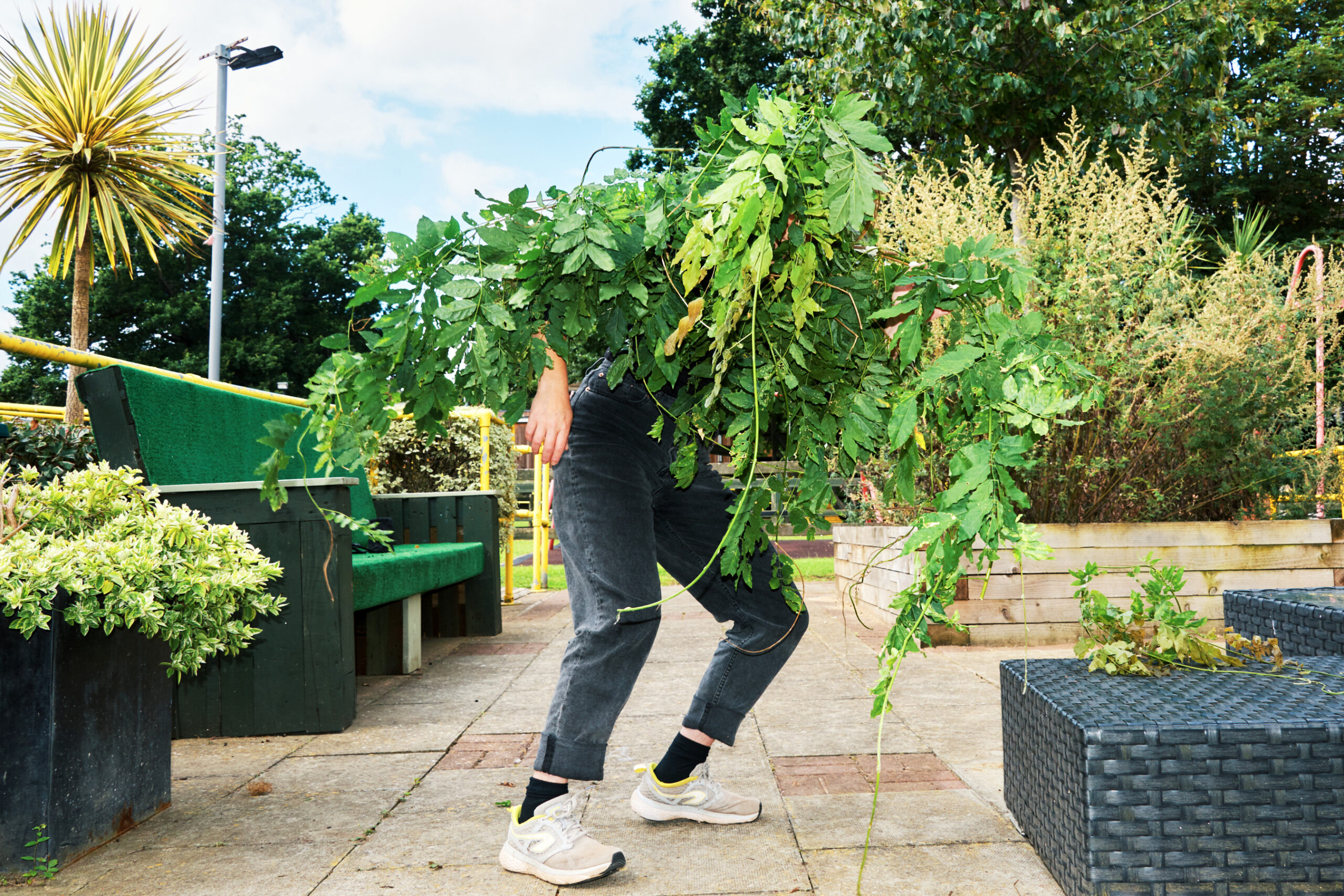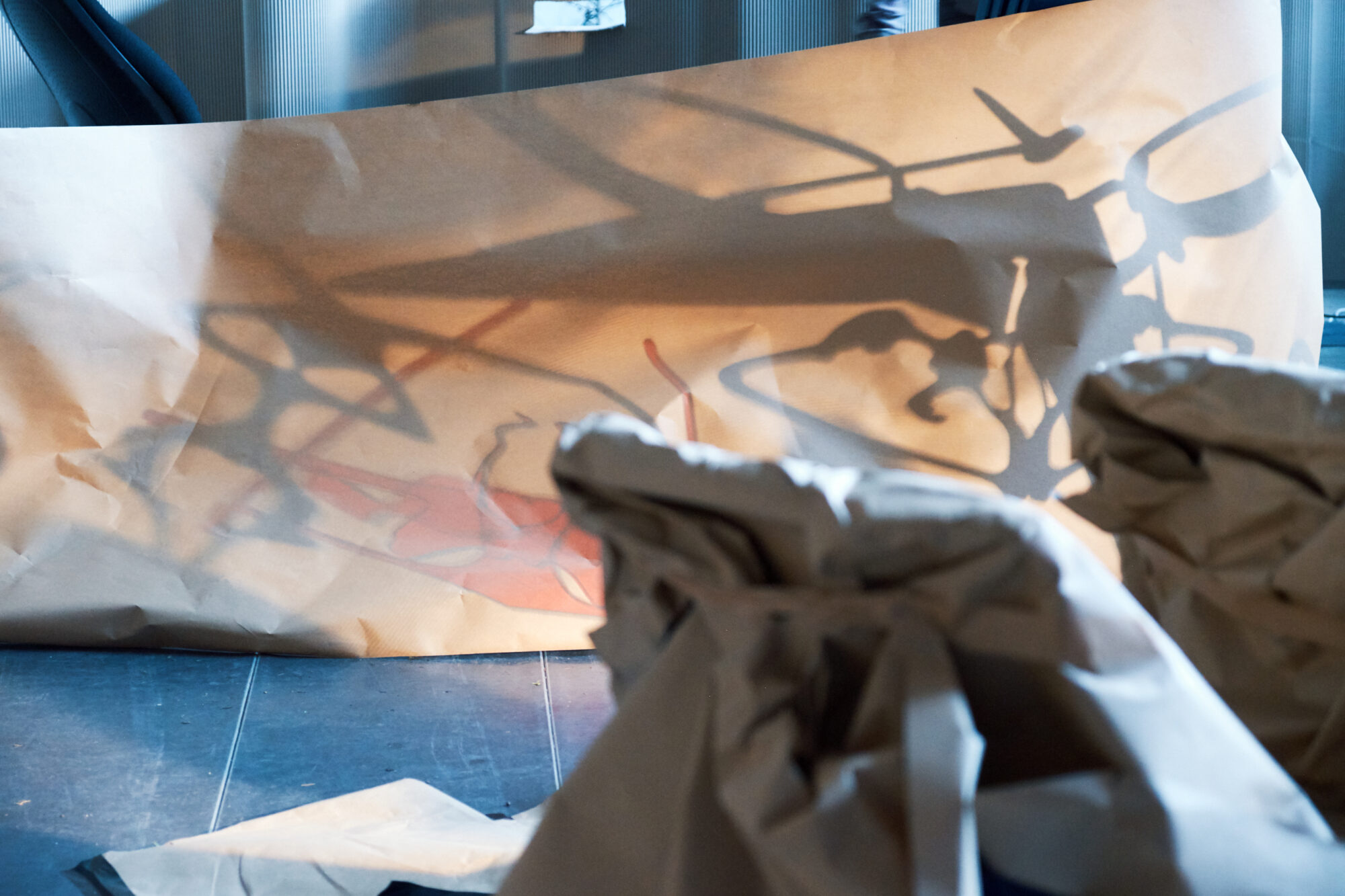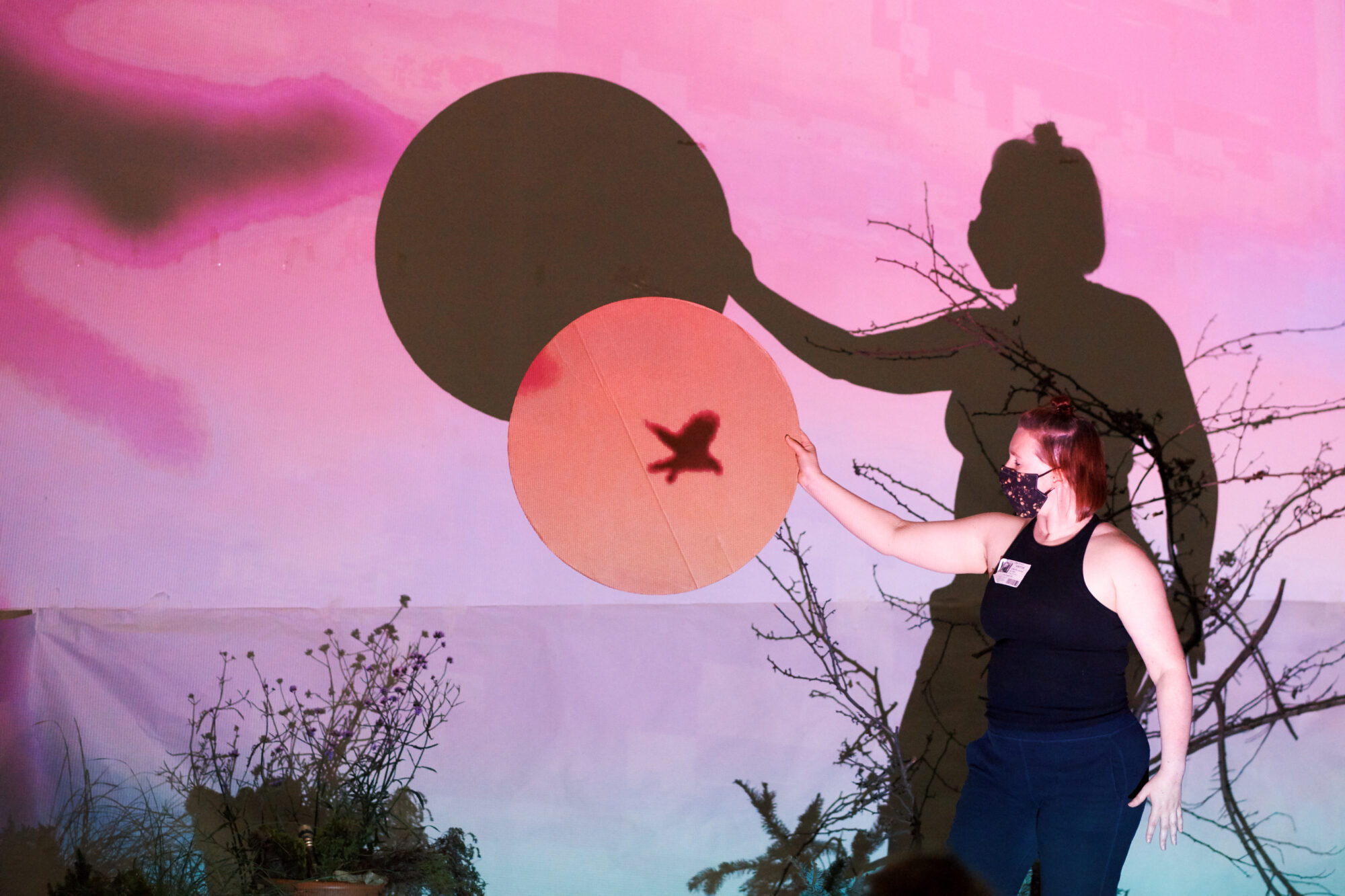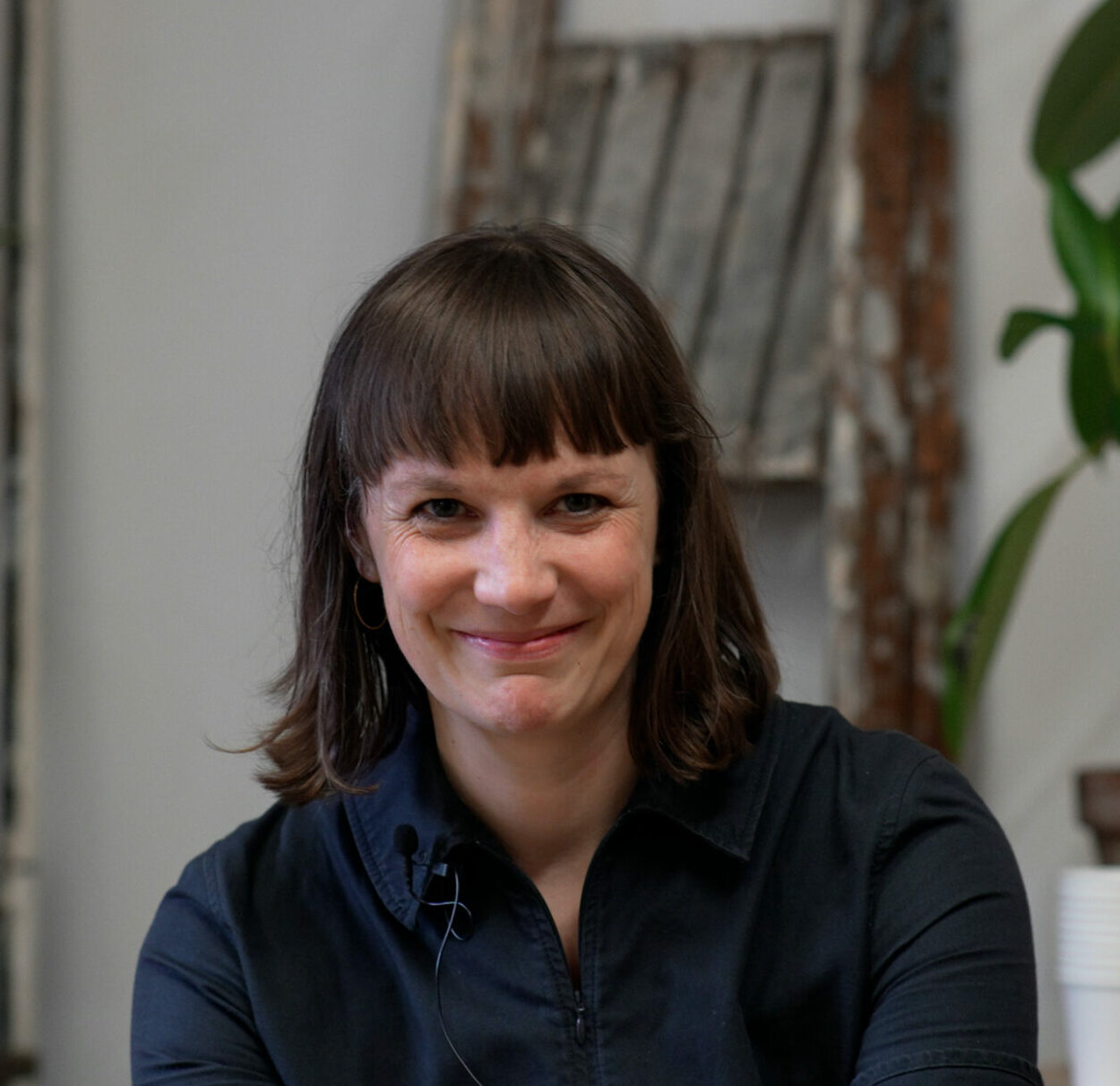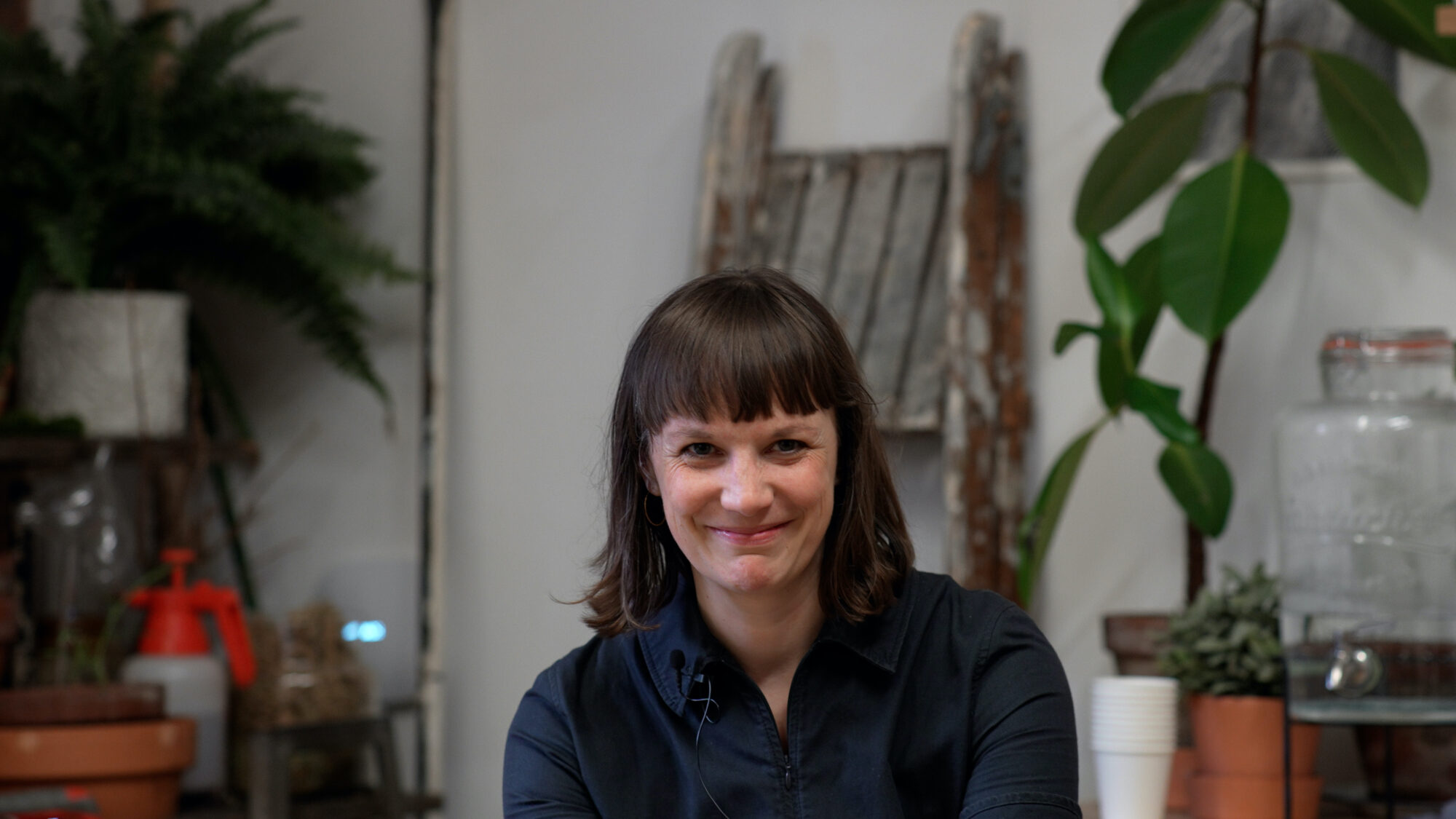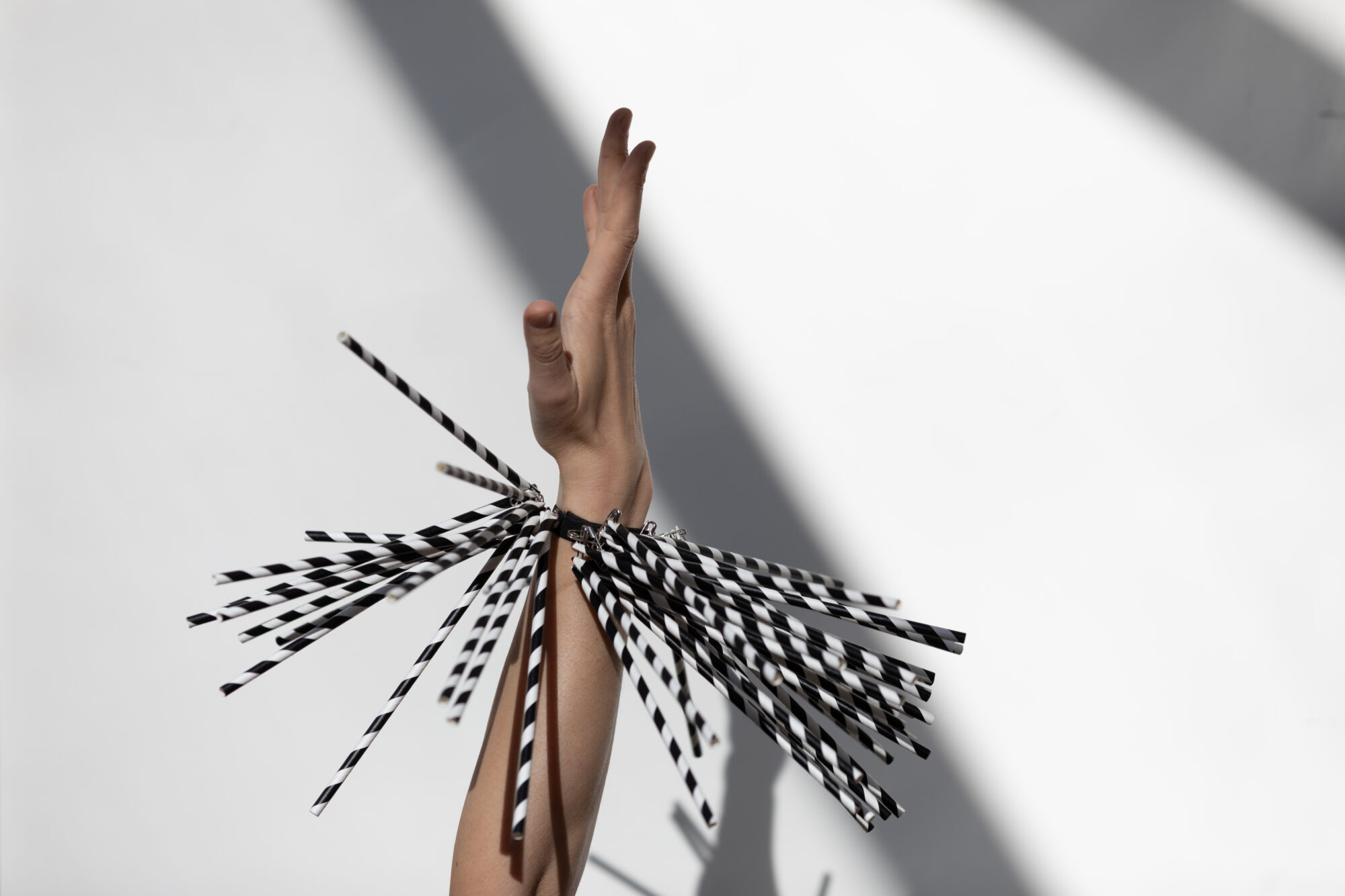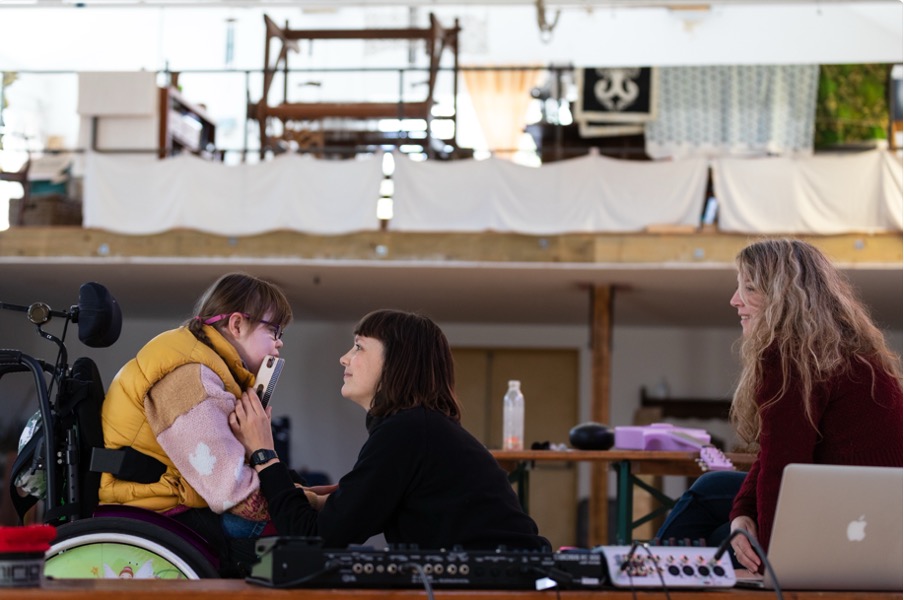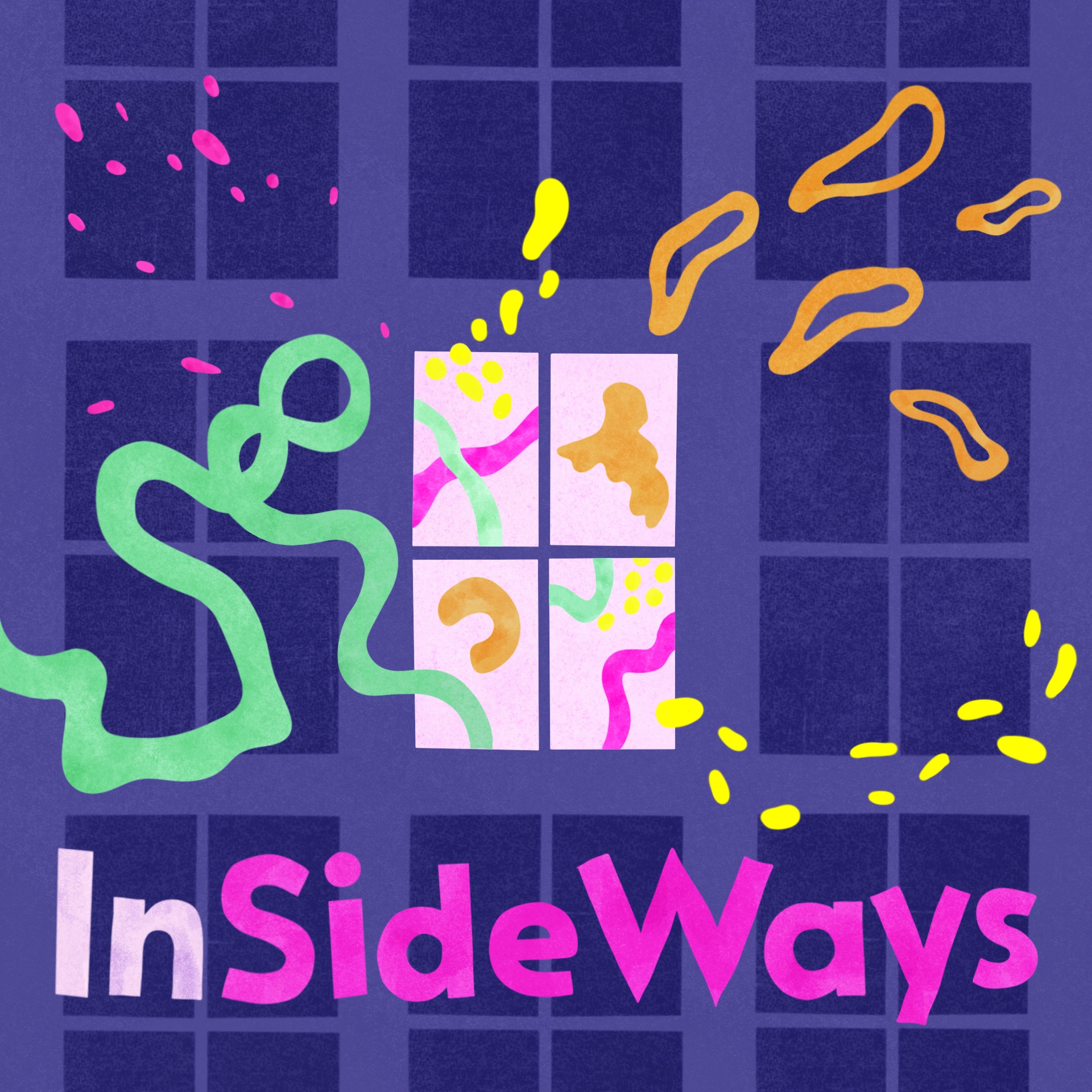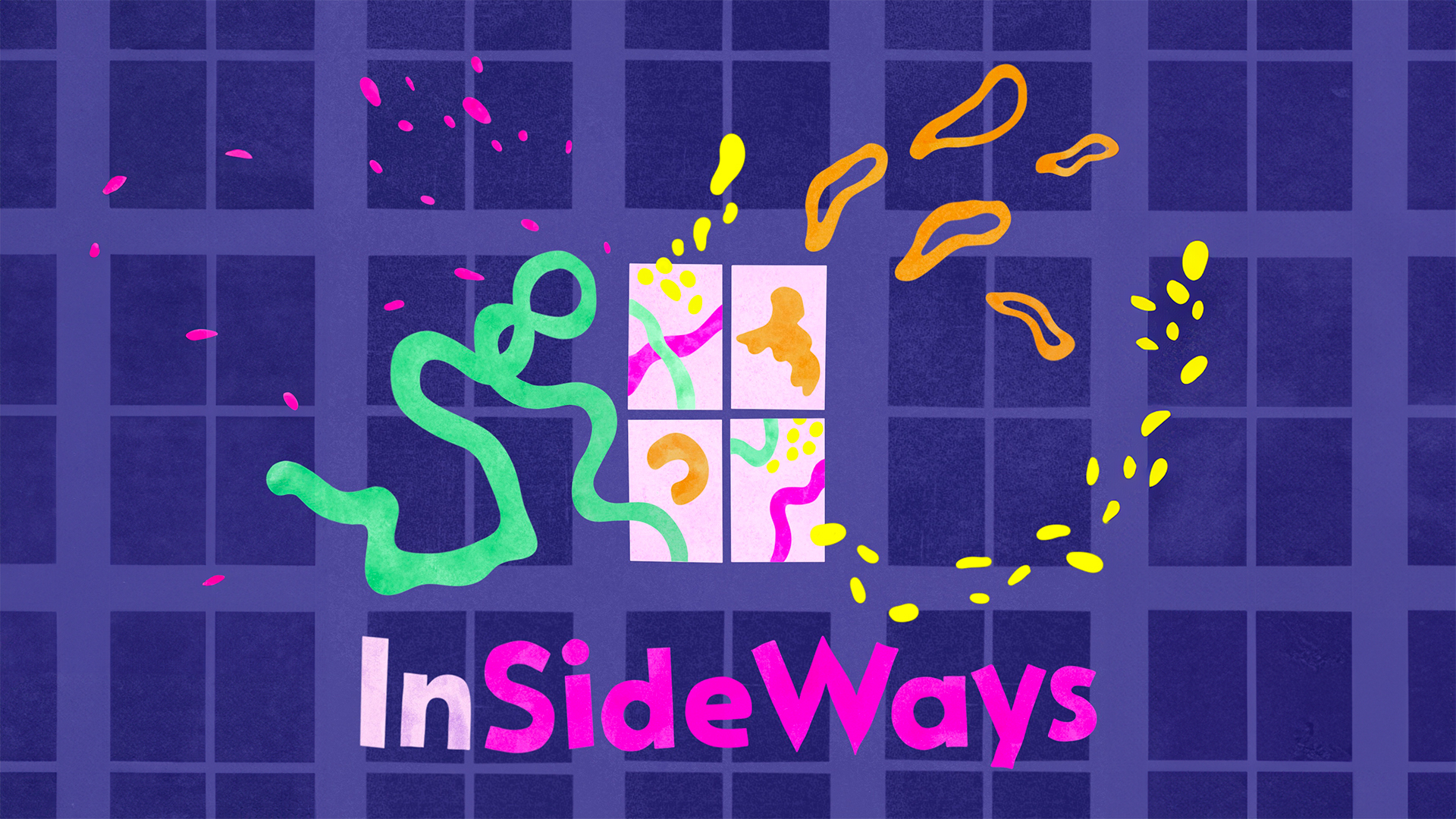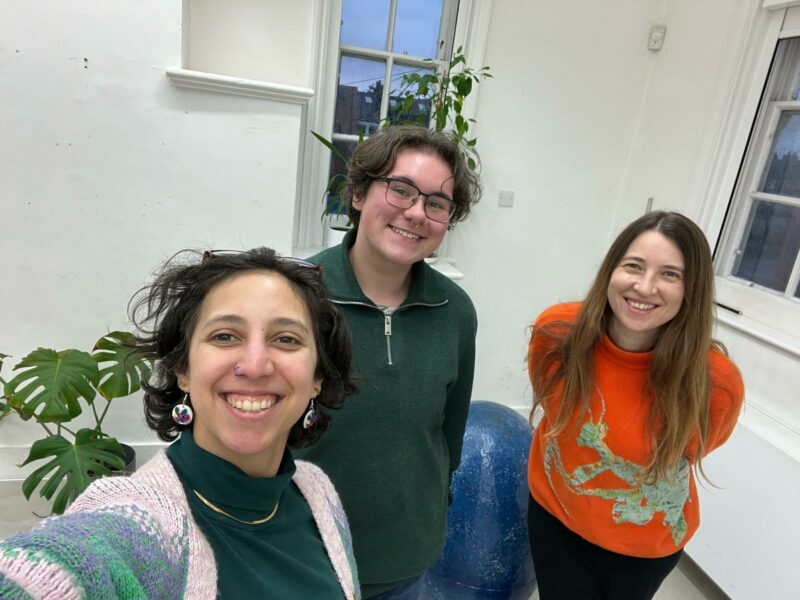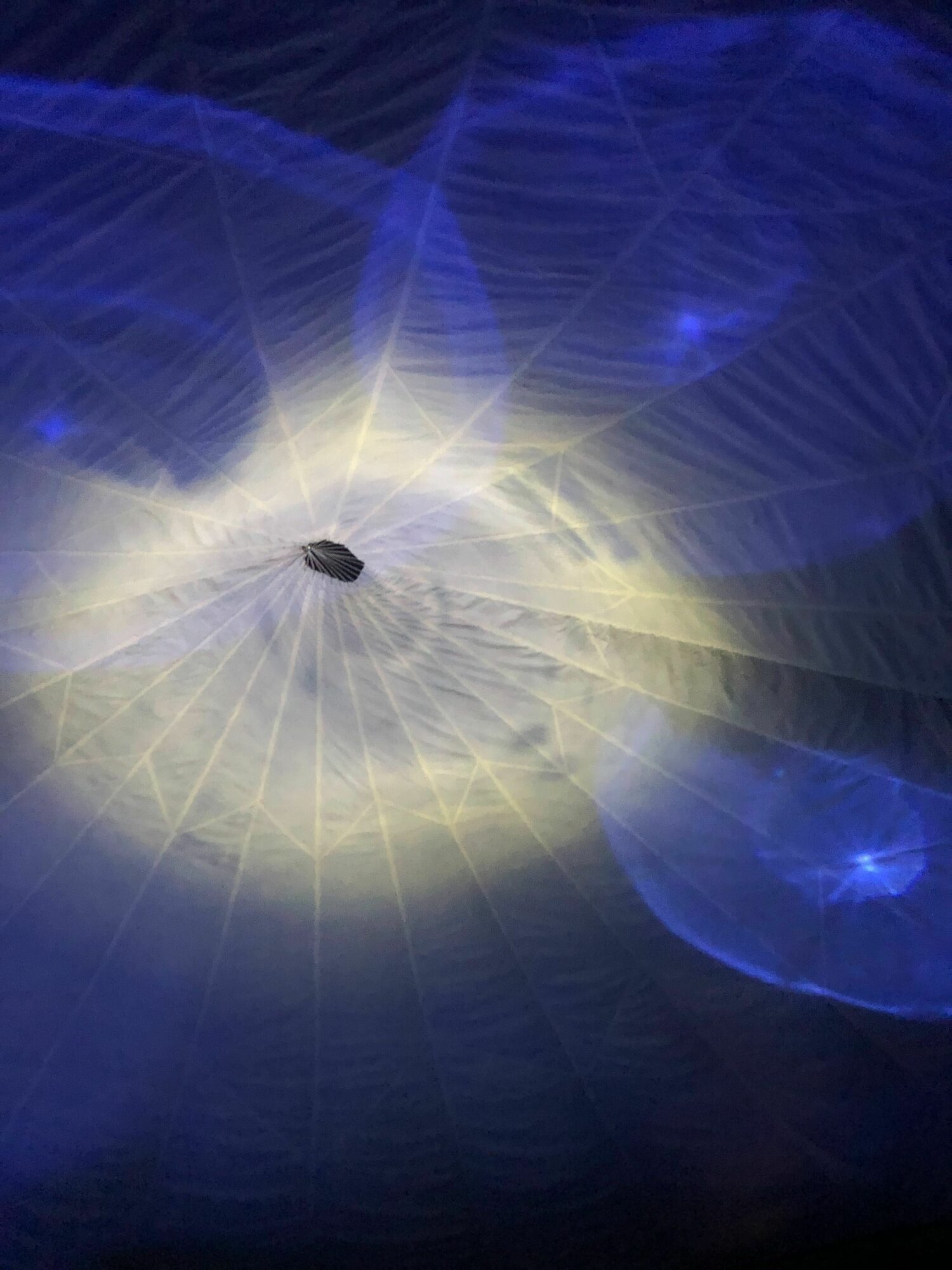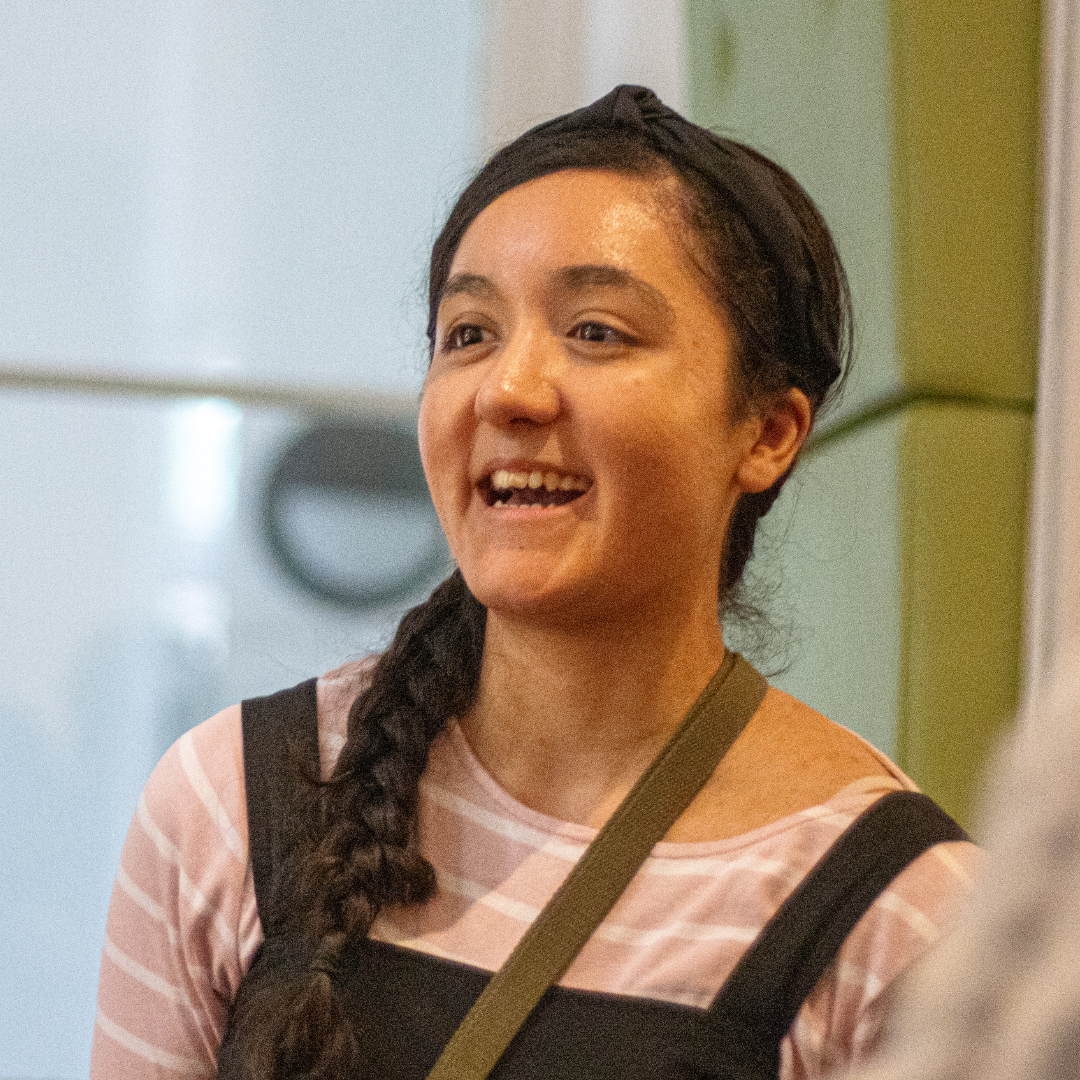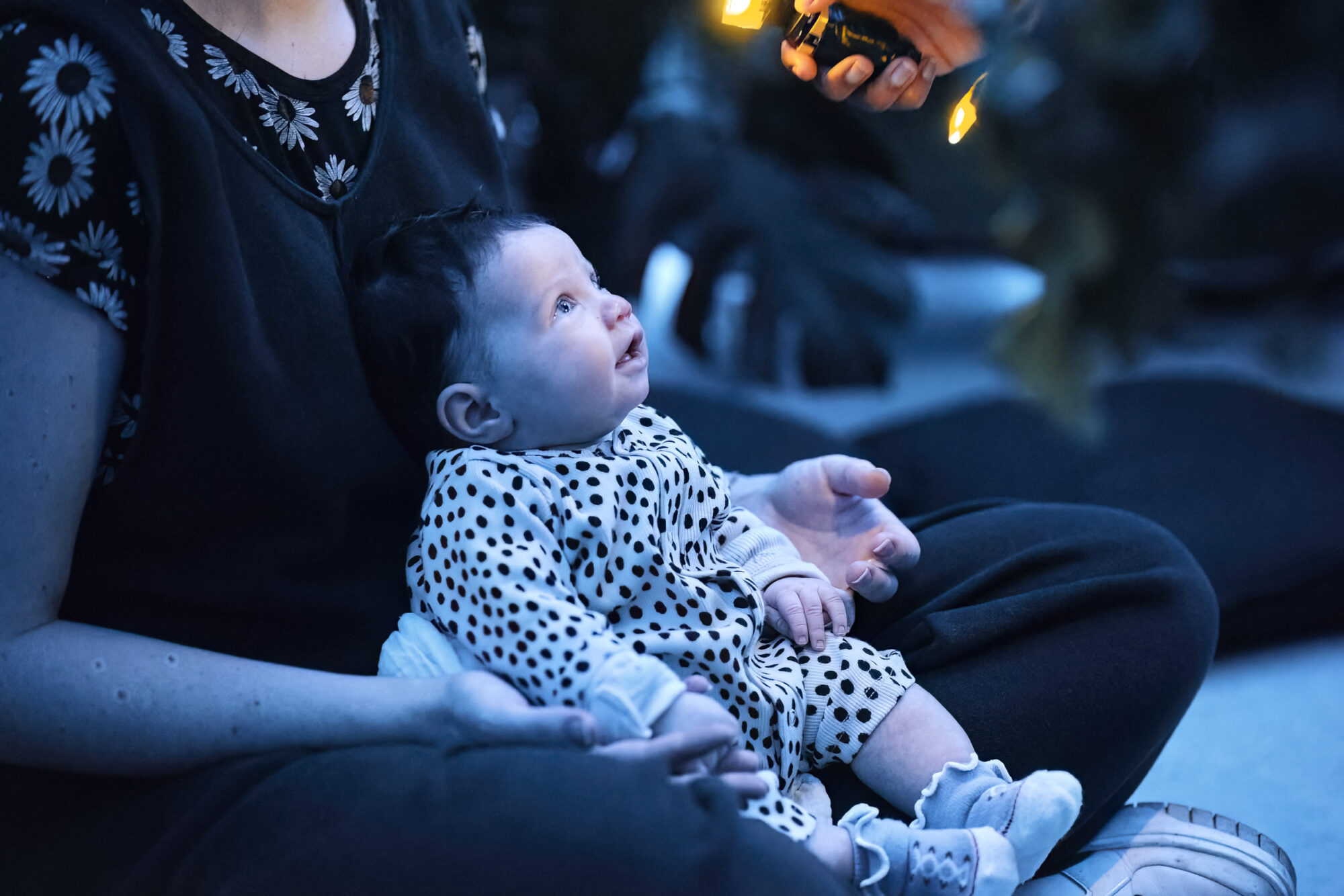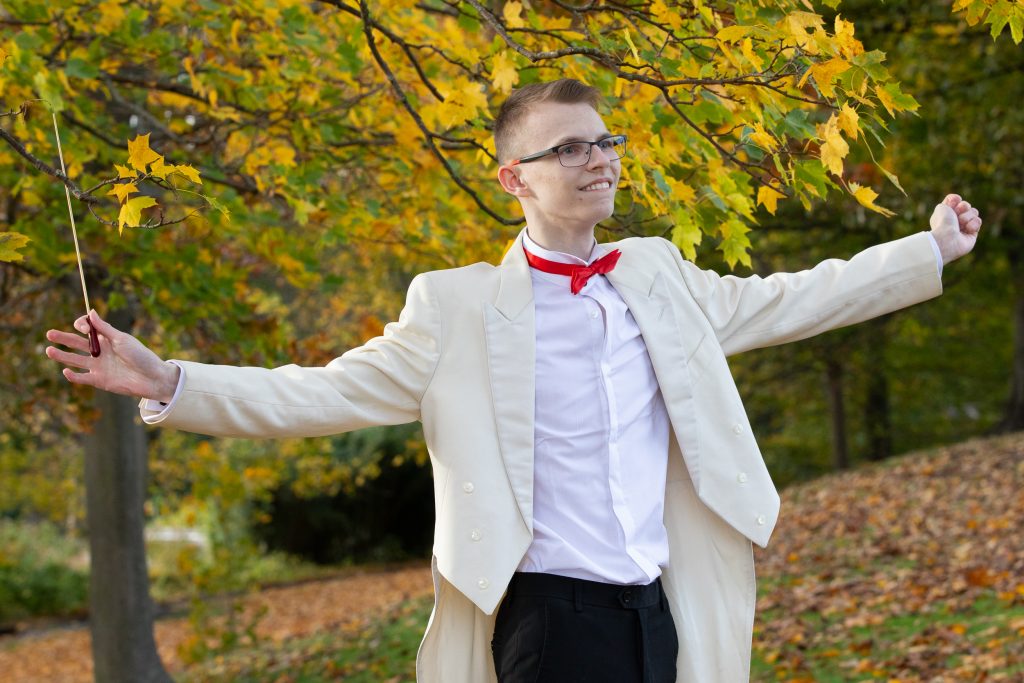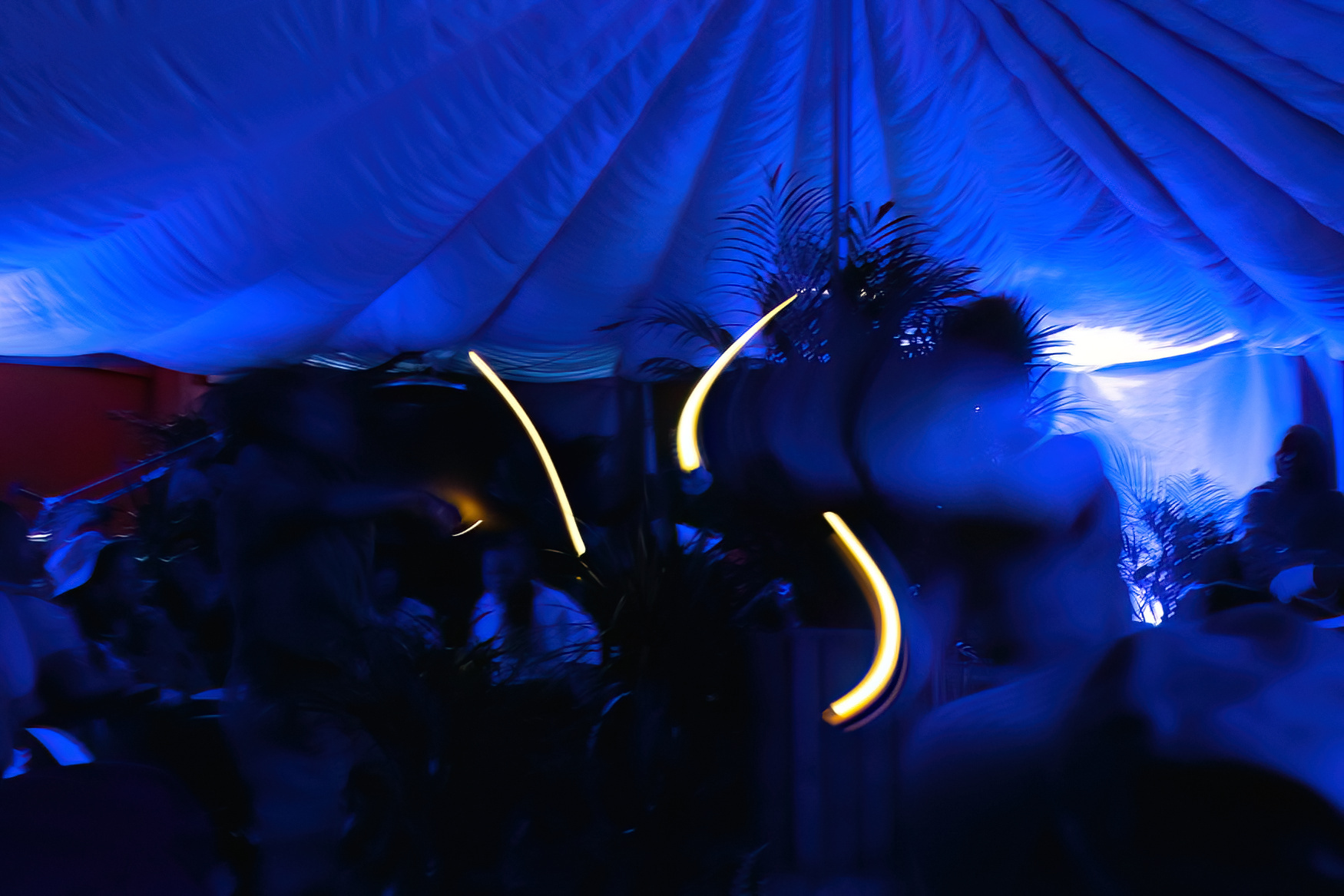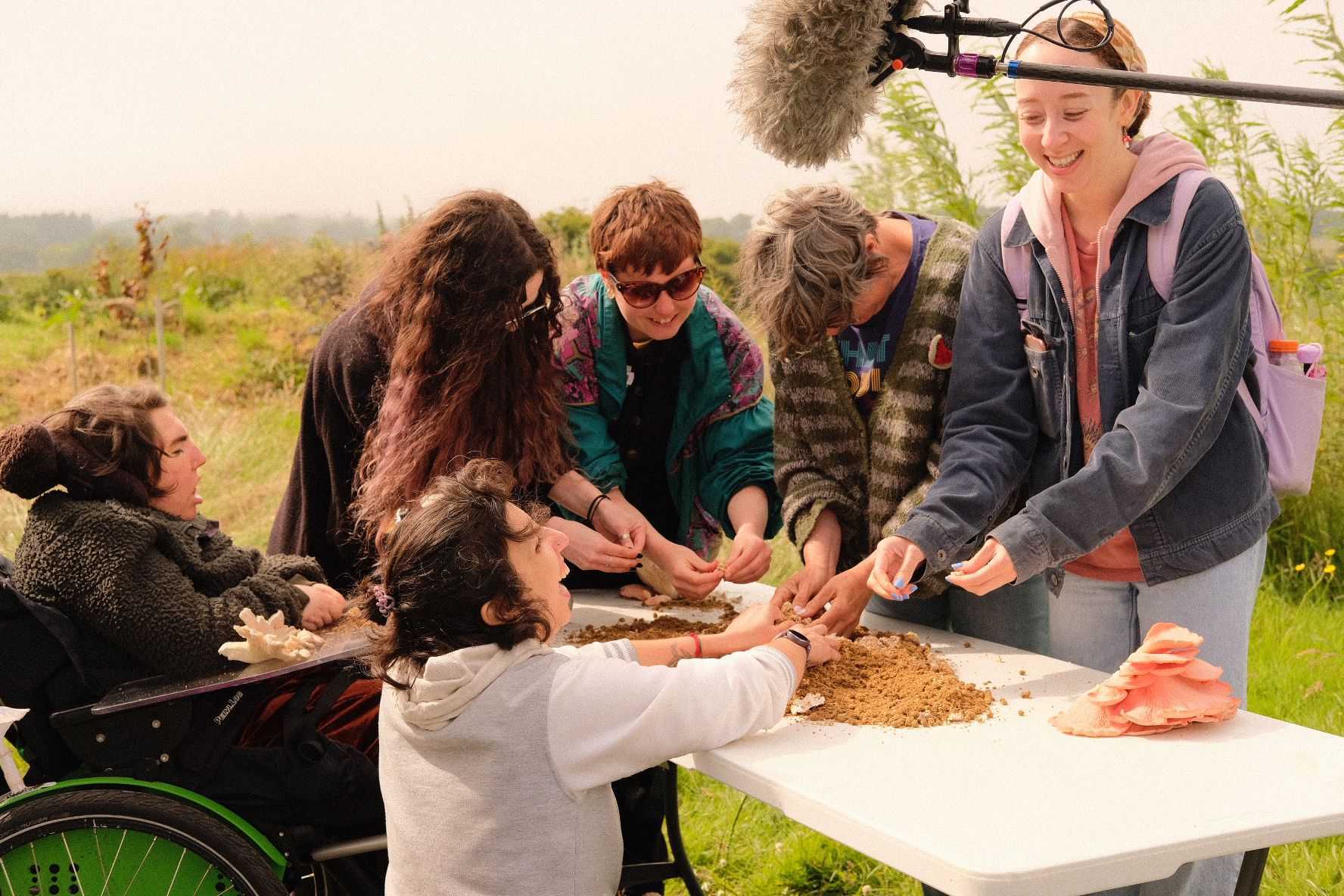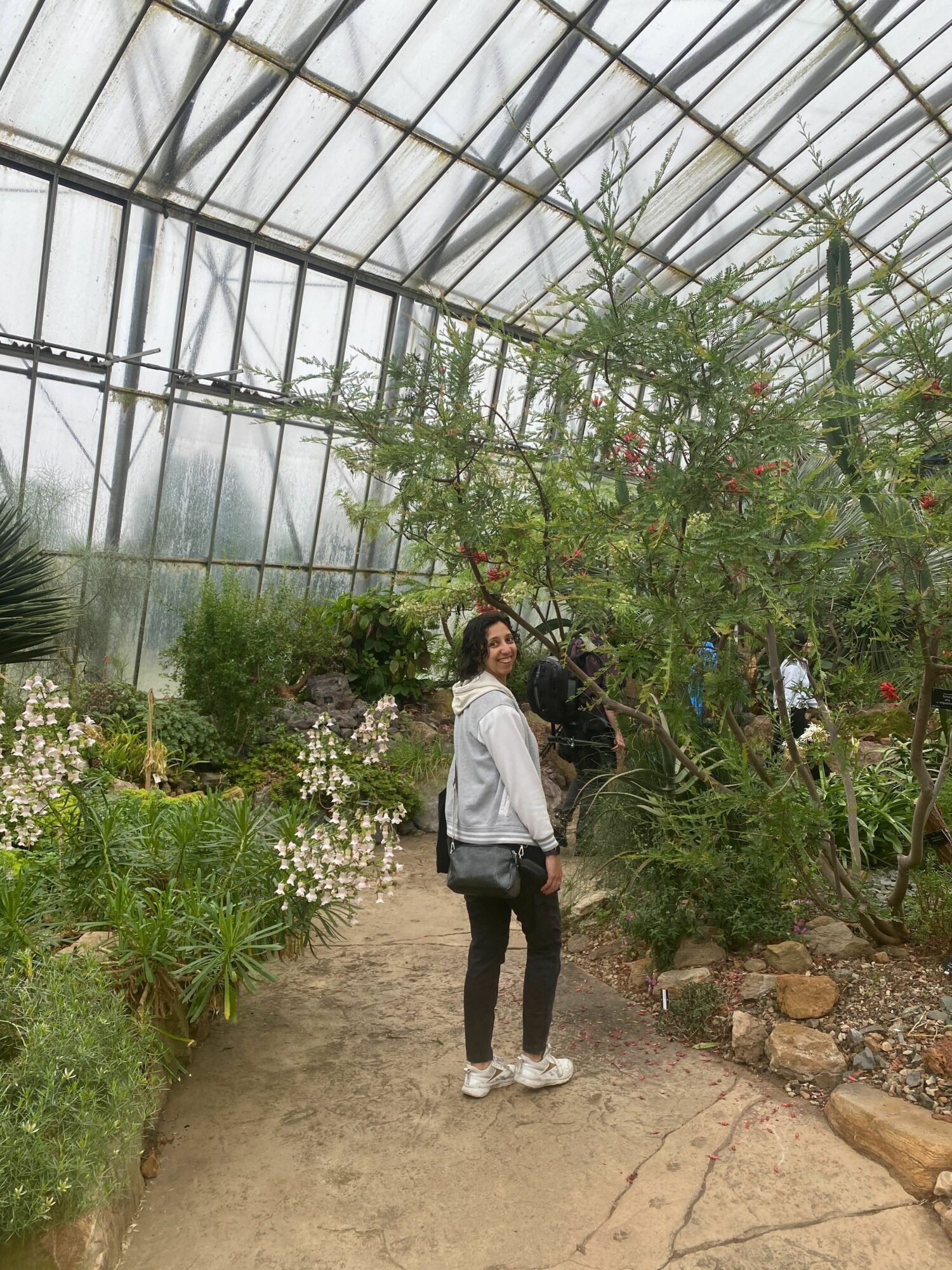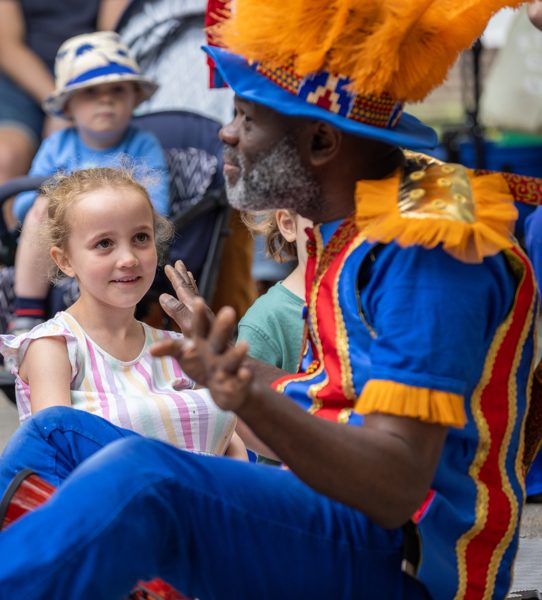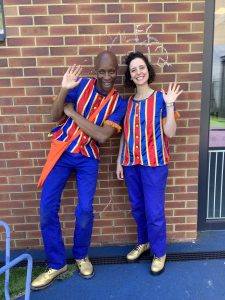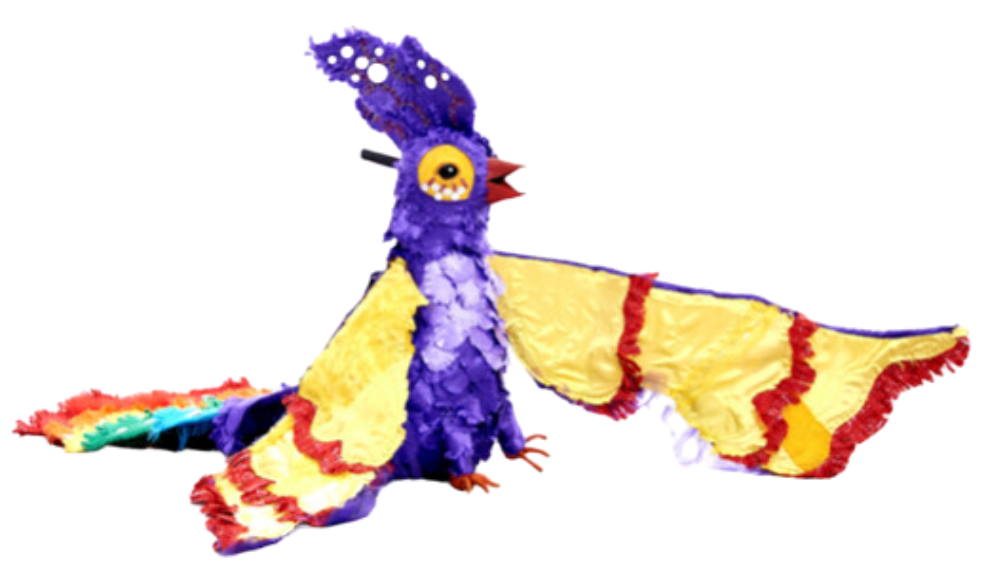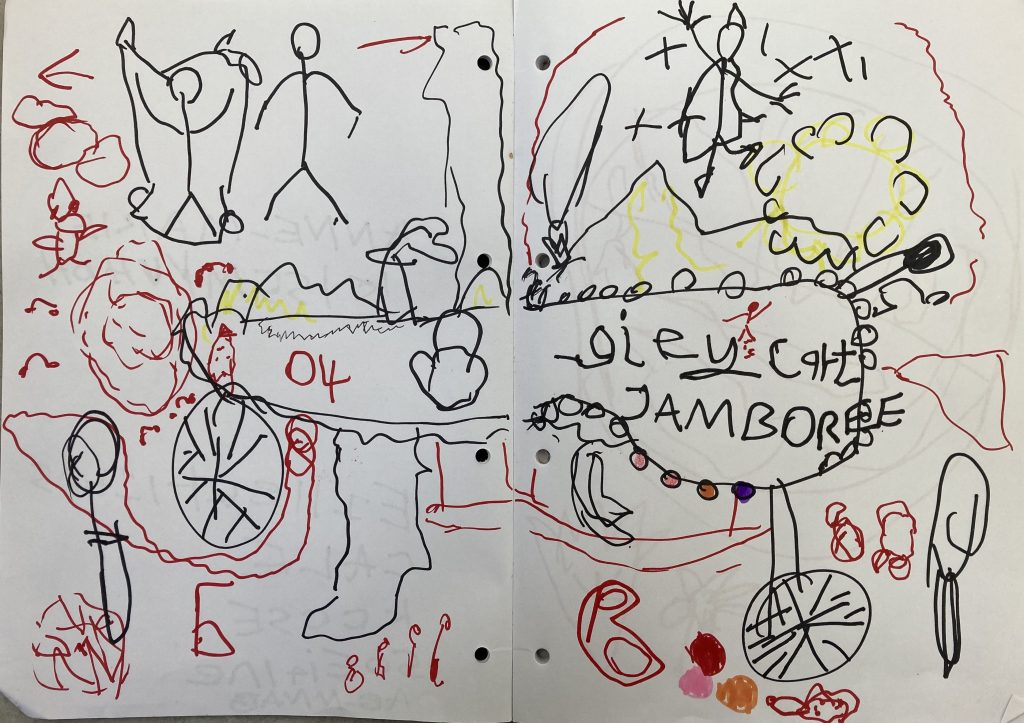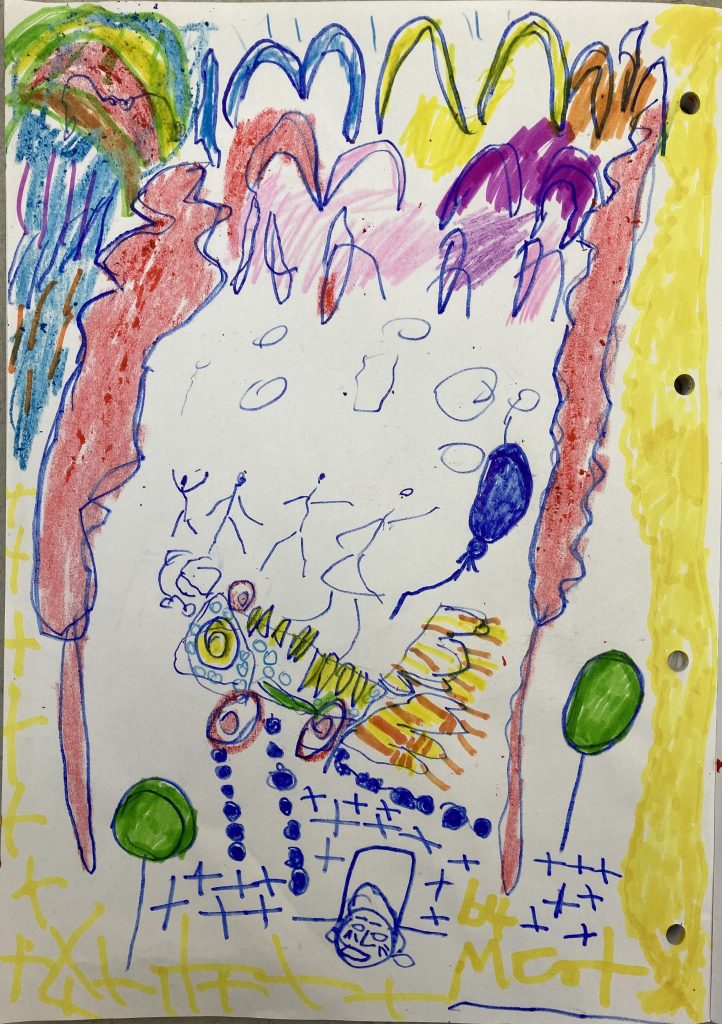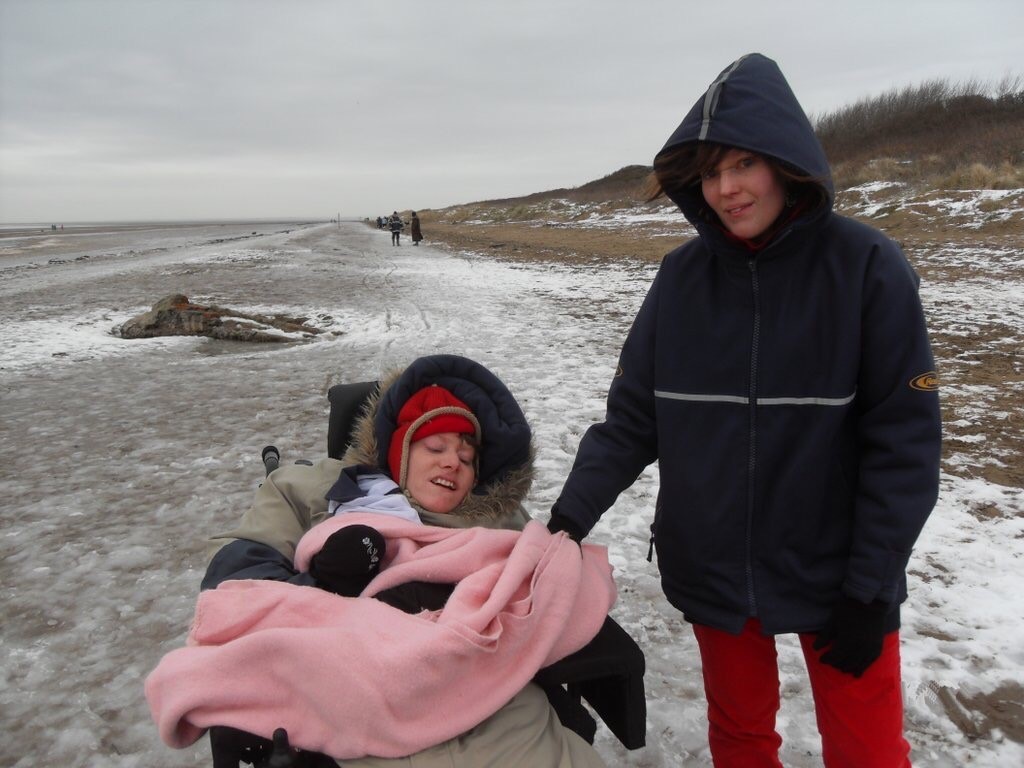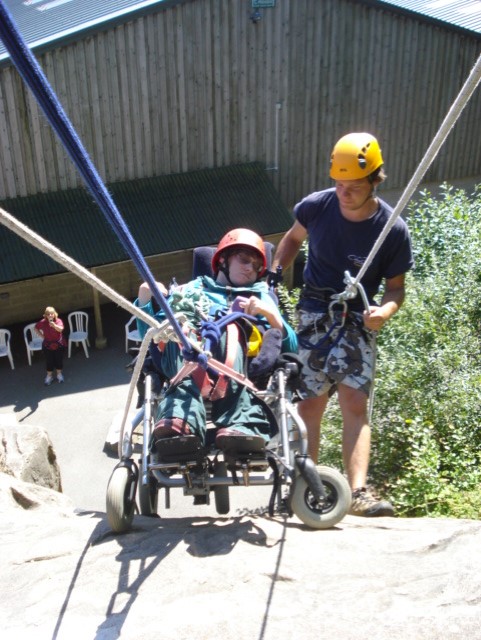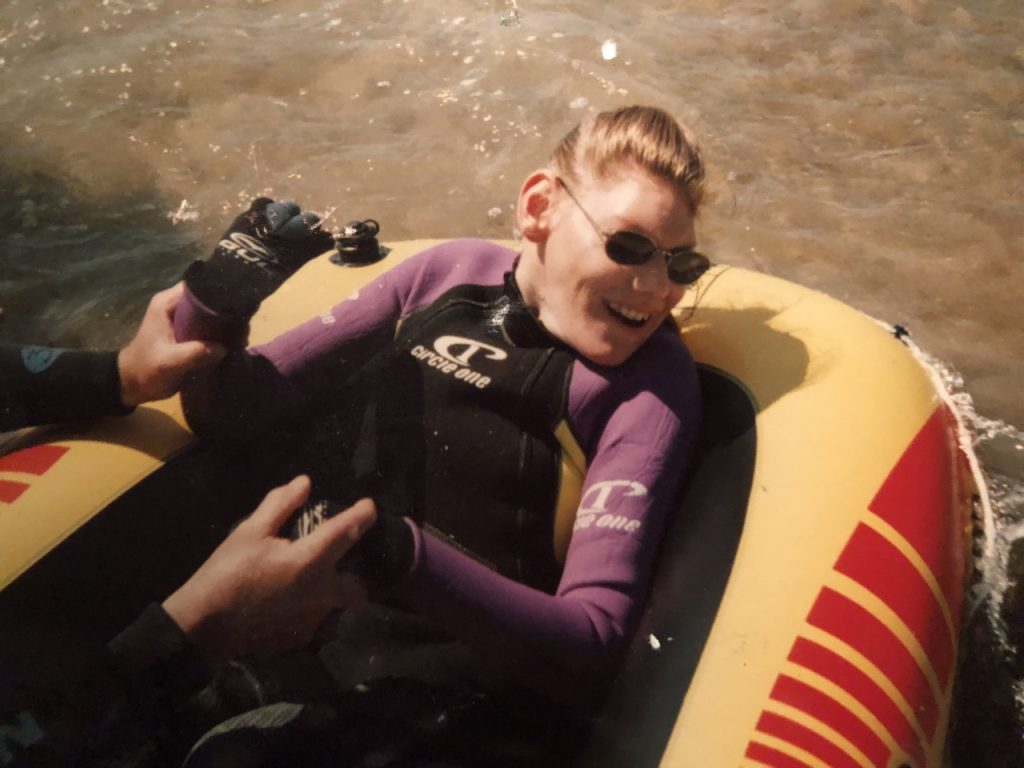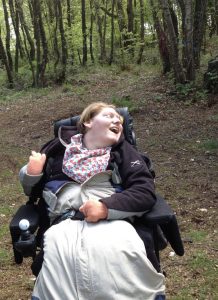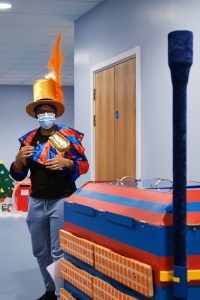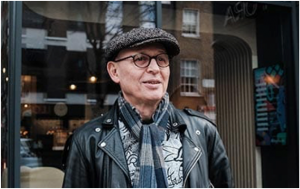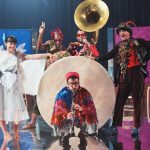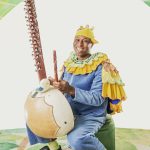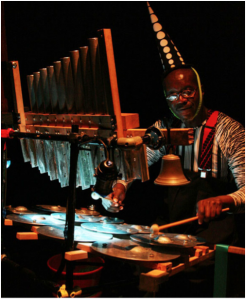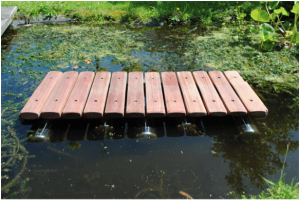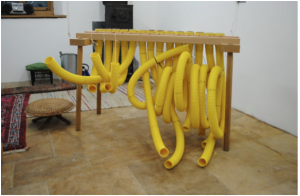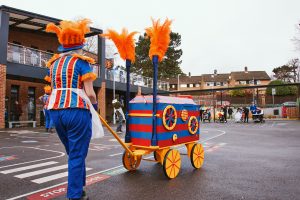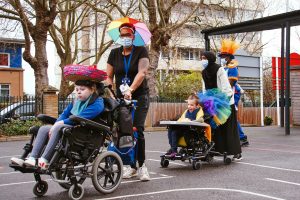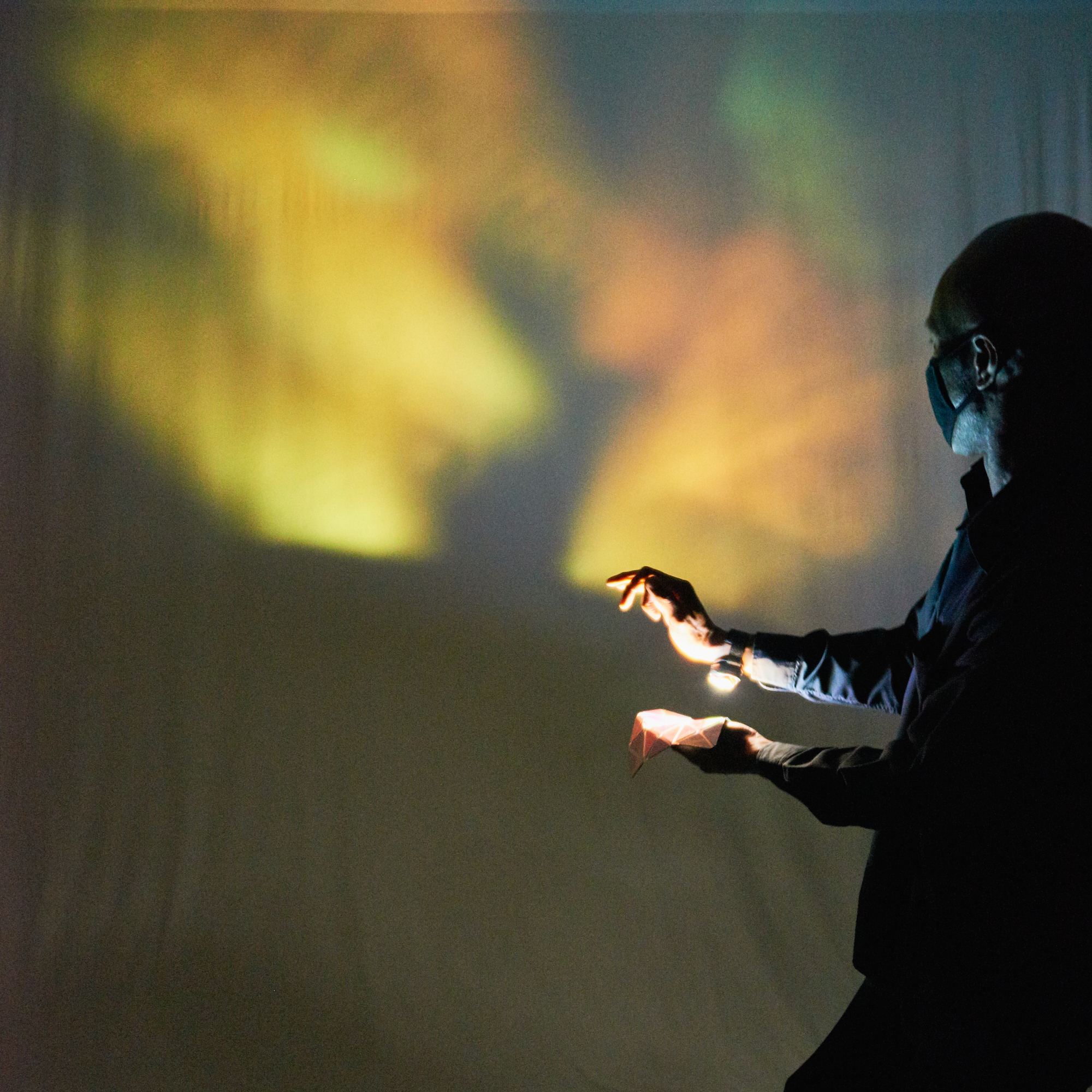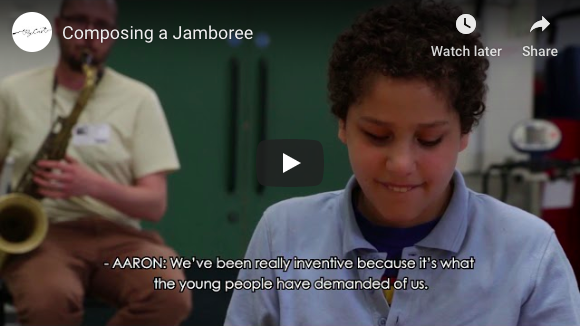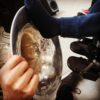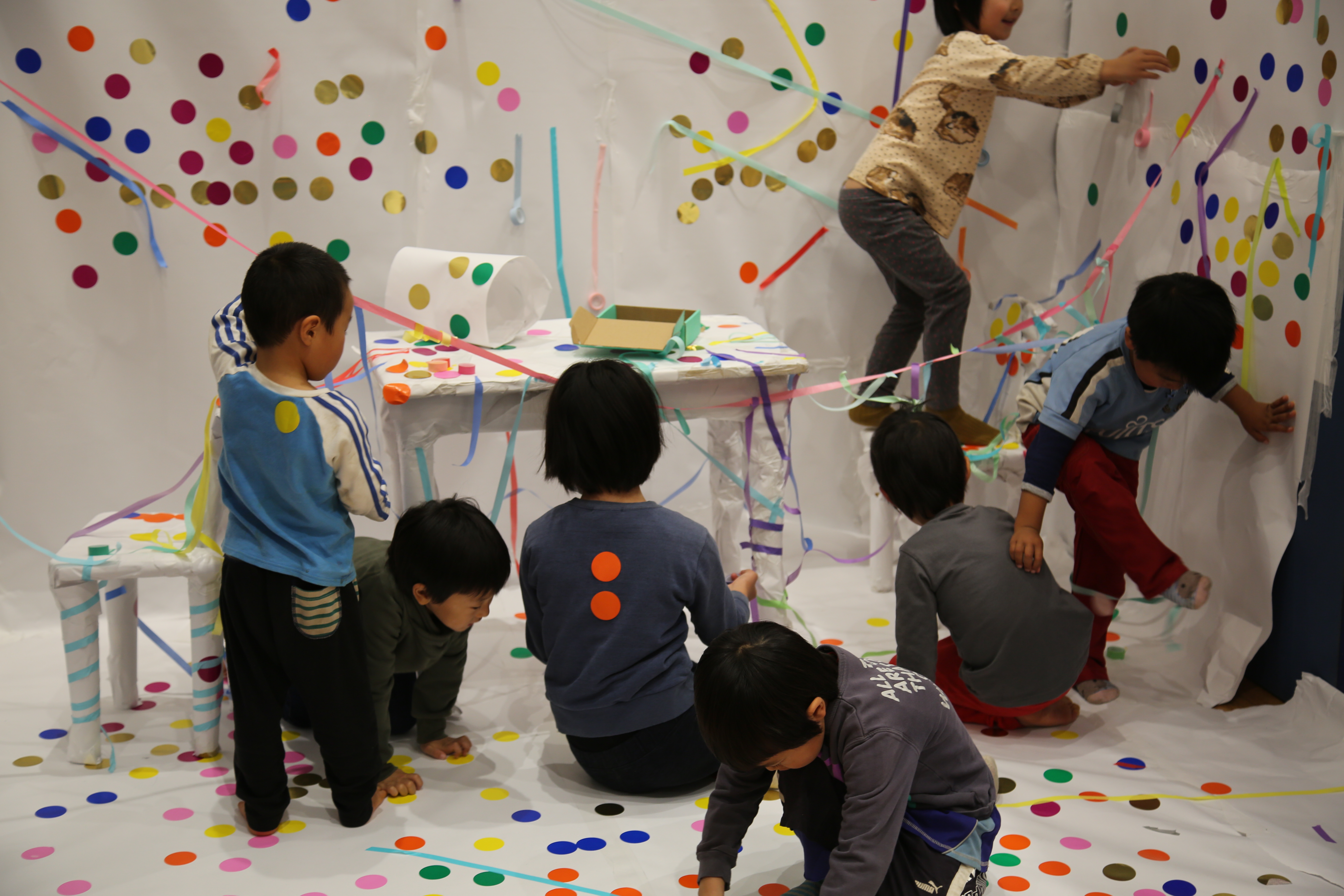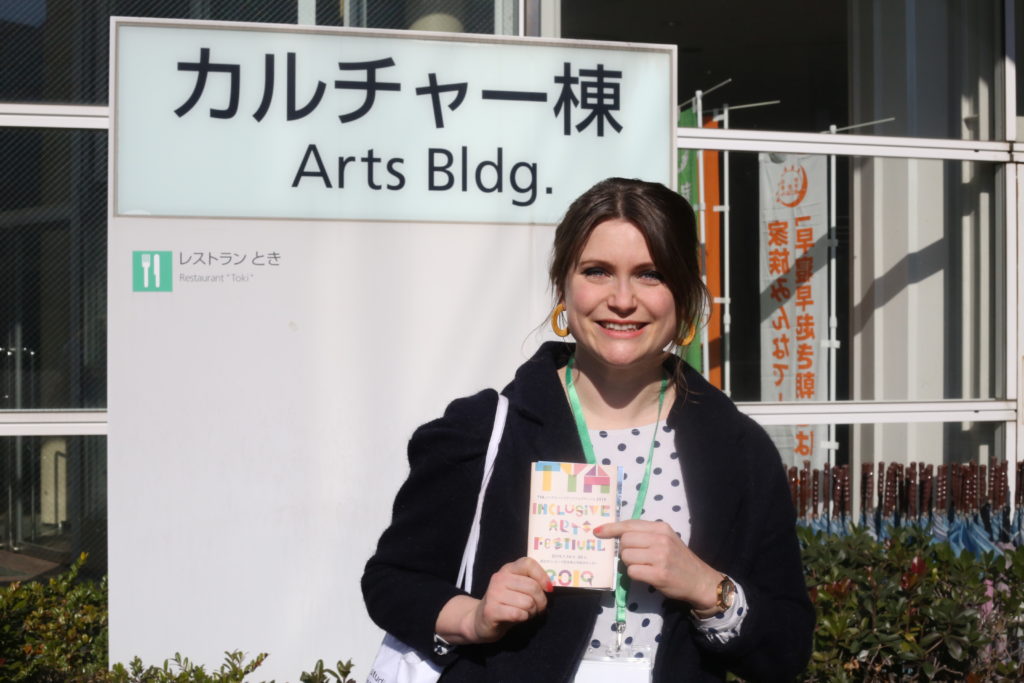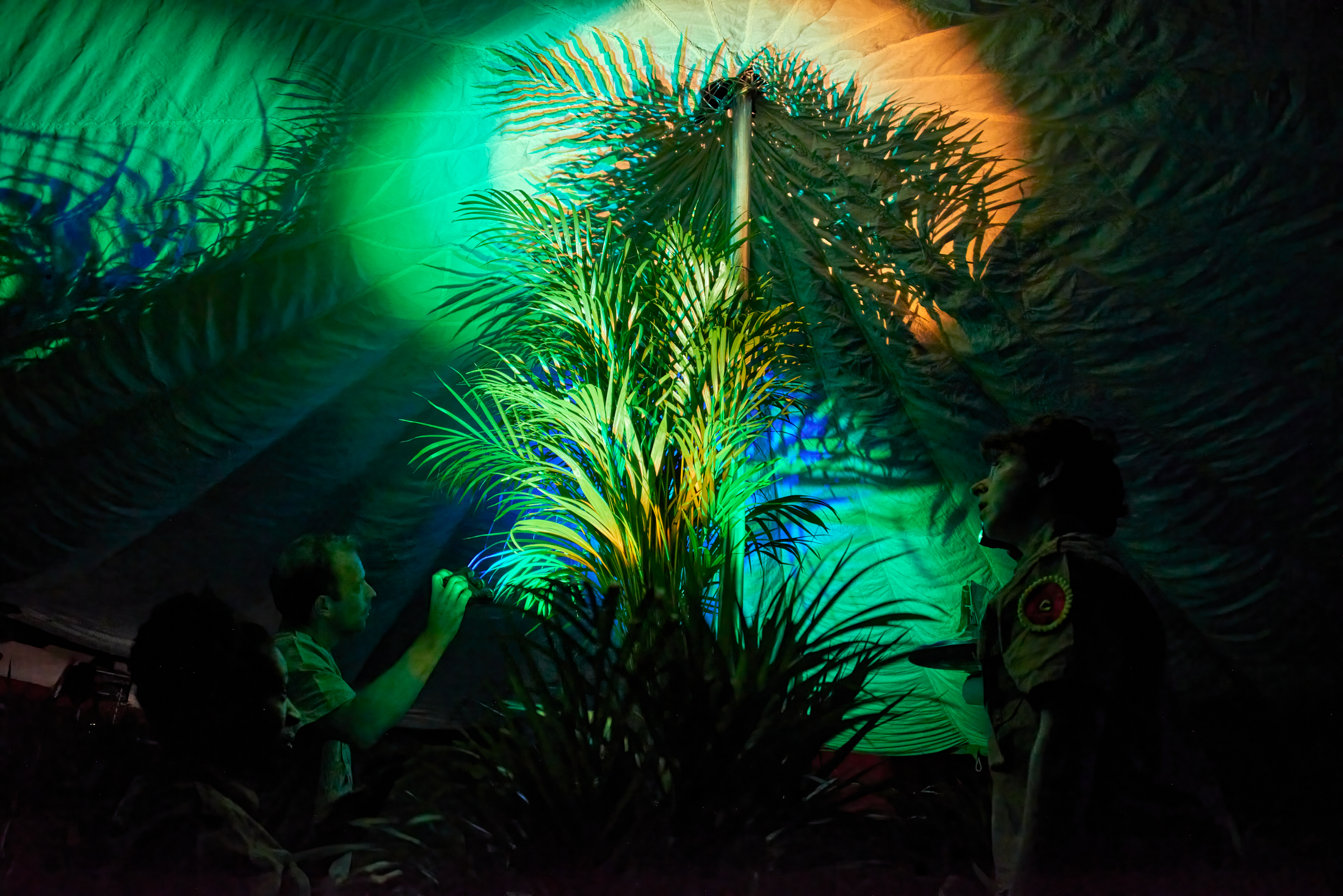
Every so often you are part of a show that makes you want to linger in the imaginary world indefinitely, somehow there’s always more to discover. Although its more than 5 years since the inception of When the World Turns, to this day it continues to grow with a life of its own…
This is the second of two blogs by Oily Cart Artistic Director Ellie Griffiths, sharing how the show was made. The first part is about the origins and early development of the project: How we made When the World Turns: The Seed

De-centring humans
In the show’s immersive environment we created, every sensory dimension is just as important as the humans in the show. The surround-sound scape (designed by Max Reinhardt and Steph O’Hara) is built from field recordings of nature. One of my favourite ‘tunes’ in the show is a track featuring the sounds of real mosquitos with different pitches, layered together in harmony. The lighting (designed by Marty Langthorne and Richard Vabre) is imbued with the colour tones and dynamics of natural light.
This hierarchal shift has a synergy with how I have witnessed many audiences of disabled children interact with sensory performances over the years. Despite theatre’s default of centralising the human story, often I witness audiences of individuals who might be just as interested in the shadows, by the sources of sound, by the smells in the room, by the texture of their seat, as they are in performers. In this way, each person authors their own ‘story’ of the show.
This shift of traditional hierarchies, of de-centralising the human in both theatre and the living world, has a satisfying resonance. Here you are welcome to interact with every aspect of your environment. Here all living beings and parts of the eco-system are valued equally.
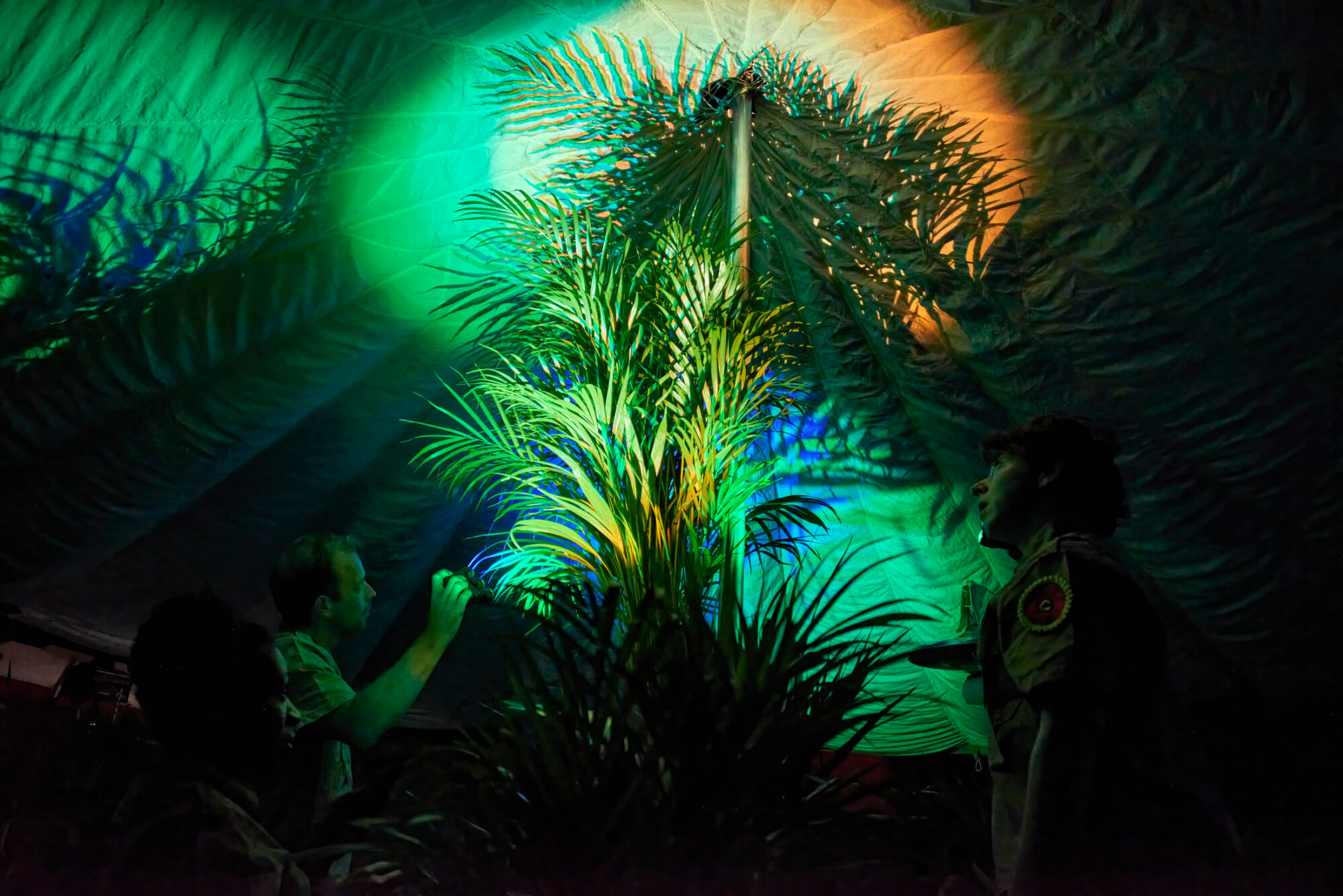
Being Still
There were times in the process where we had to grapple with the balance of inclusion and sustainability (for example, the use of plastic as a robust material that can be cleaned easily when passed around for interaction with lots of audience members). This was unlocked by the theme of stillness. What this young audience often bring to a space is a sensory presence, and a natural focus on ‘Being rather than doing’ (a phrase coined by the researcher and artist Dr Jill Goodwin). By celebrating the value of being still, we hint at how much could be learnt from this community about our relationship with the natural world. When you let go of focusing on rushing around and ’doing’, you have time to notice the layers of life that are around you all the time. You start to value things differently. In this way, sustainability and inclusion need never be placed at odds with each other.
Variation
We (Oily Cart and Polyglot… Sue and I) set out to make the same show together. One thing I’ve found surprising is how simply ‘re-planting’ the first version of the show in a new culture and creative eco-system didn’t work out in the ways we anticipated. With each new iteration, new artists and collaborators have invested their ideas and input. The materials, smells and textures are different here. This is alongside the producing company’s different models, and unique history of Sensory Theatre work in each place.
All of this has fed into the two versions of the When the World Turns show feeling more like siblings. As Sue reflected, from seeing the UK show at Edinburgh International Children’s Festival recently: ”They have the same DNA, but distinct personalities”. Although not our original intention, this has brought us to a way of international co-producing that feels aligned with the values of eco-scenography: There is room for variance, evolution and transferring rather than parachuting into new environments. The soil we plant in is unique to place. The When the World Turns sister shows share values and practice, and both continue to evolve and be shaped by audiences they meet around the world.
Since premiering the first version of the show in 2022, there have been many off-shoots; an At Home version, A World Beneath Us, and a new show for babies and their grown-ups, Great Big Tiny World.
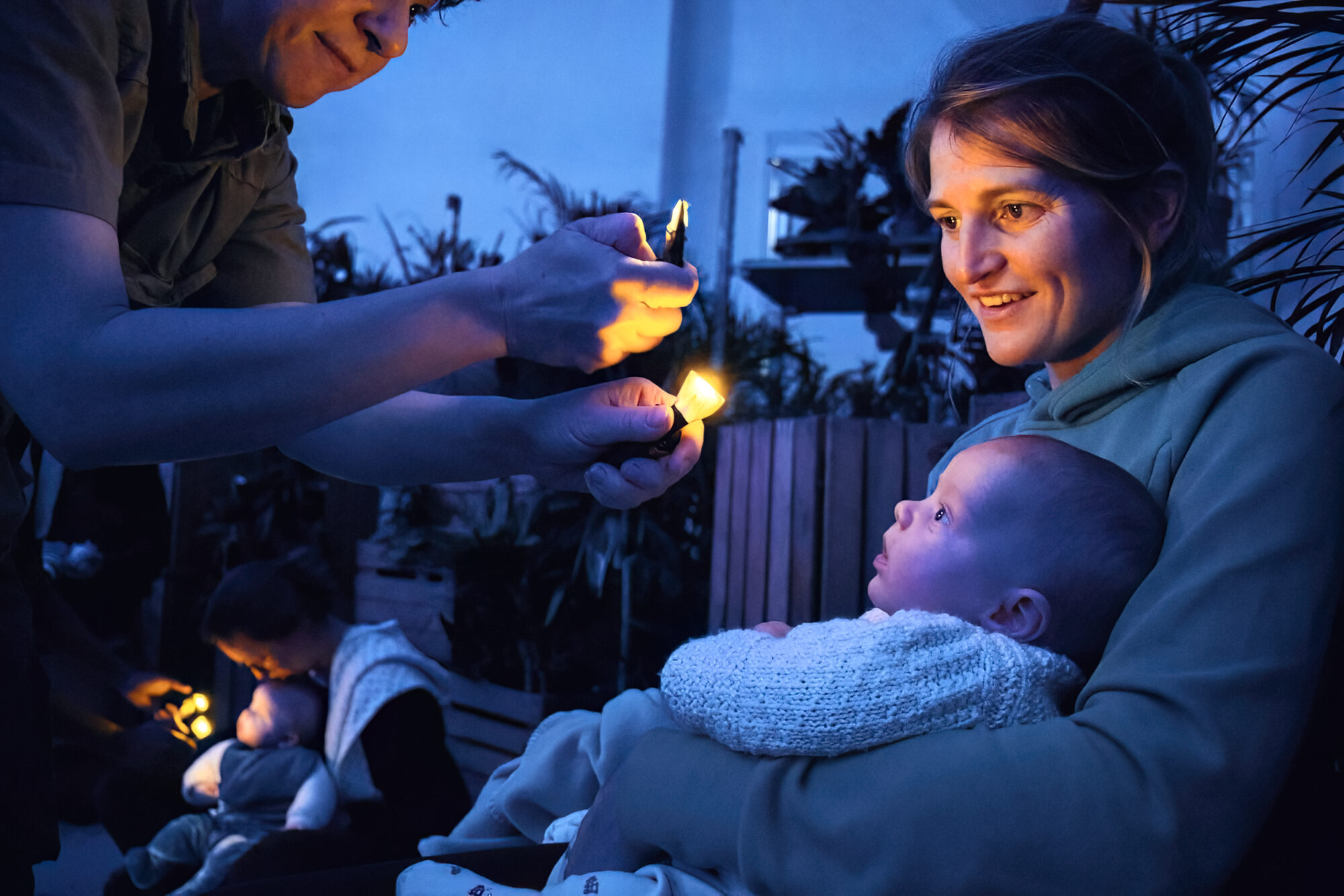
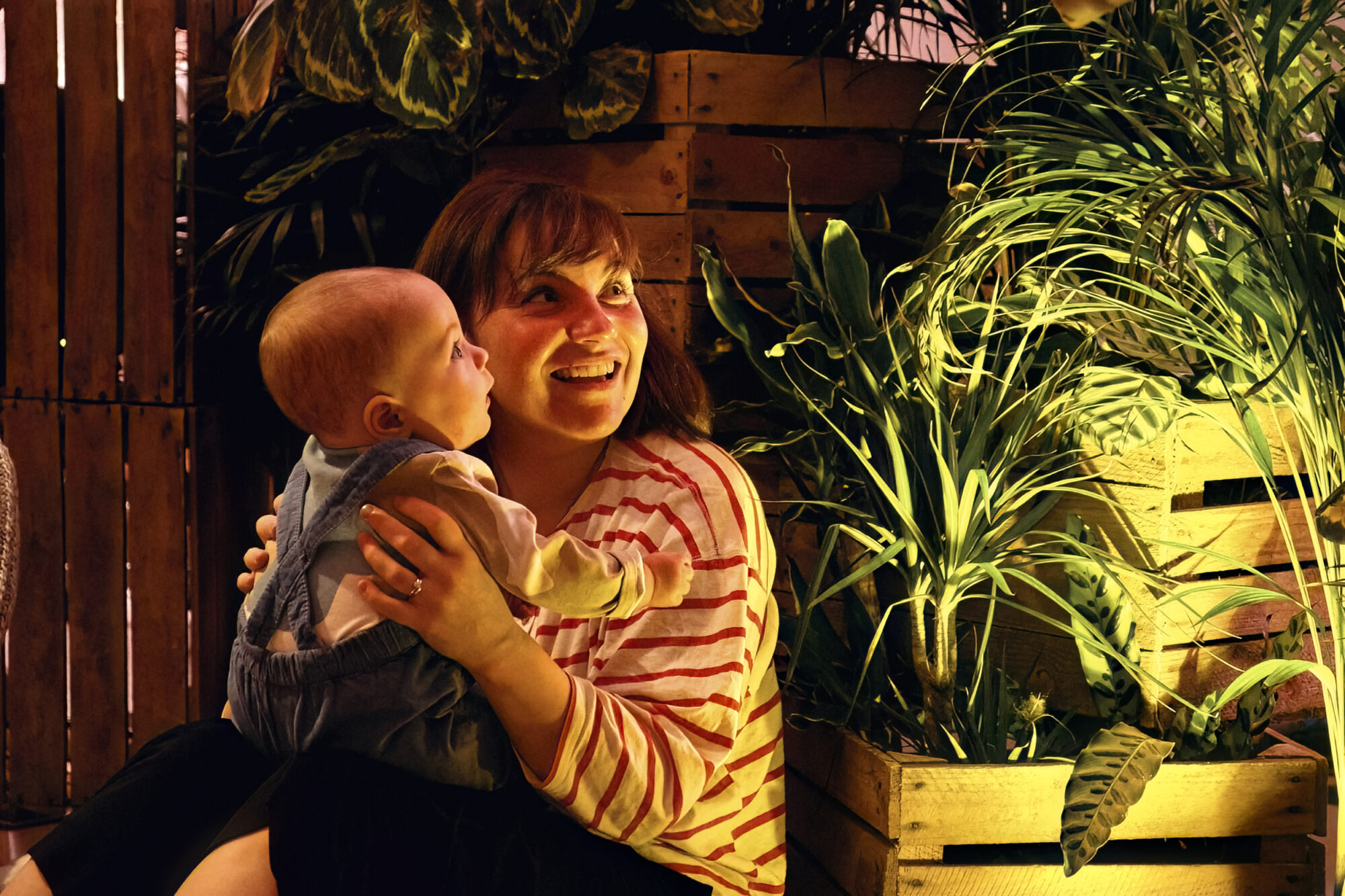
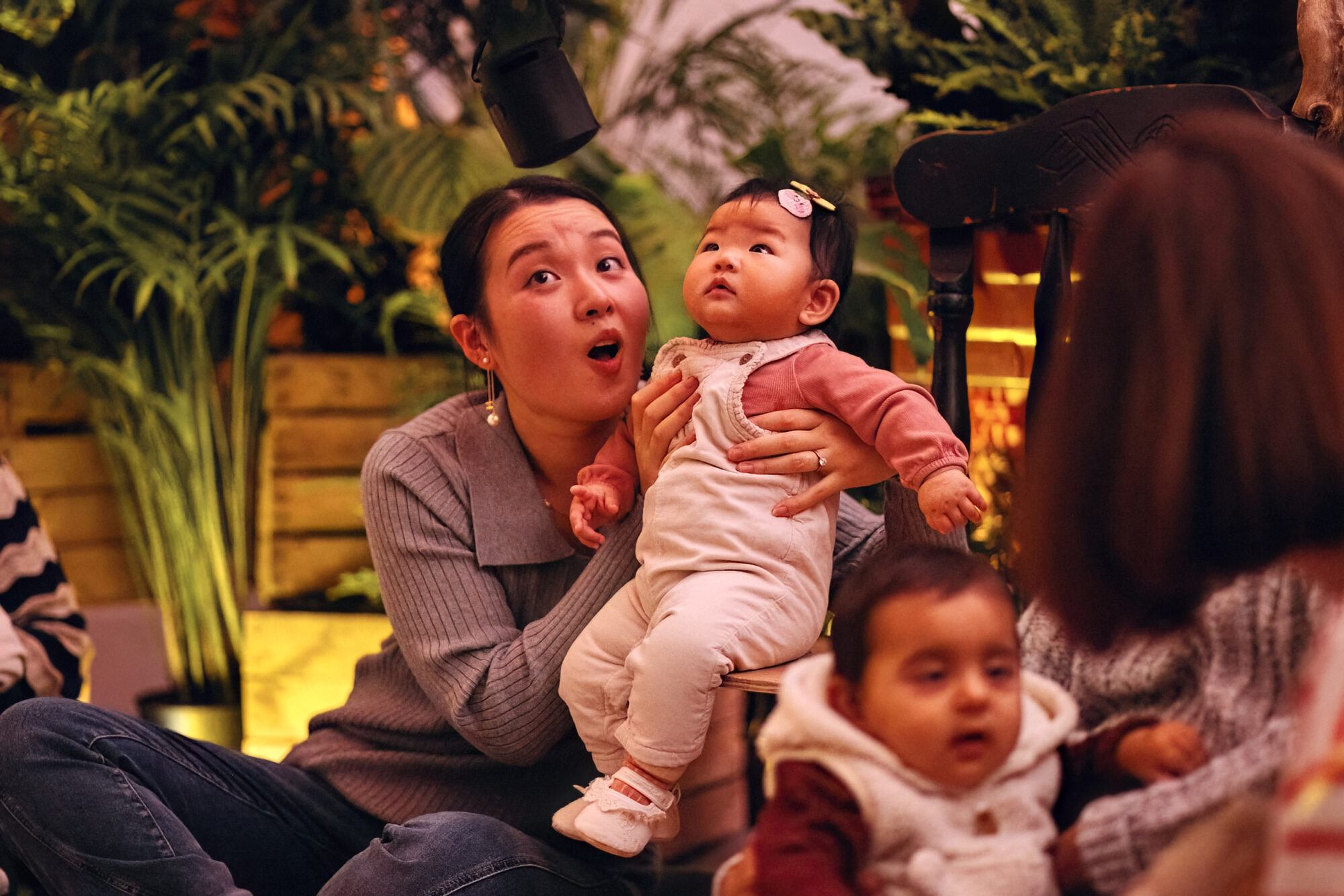
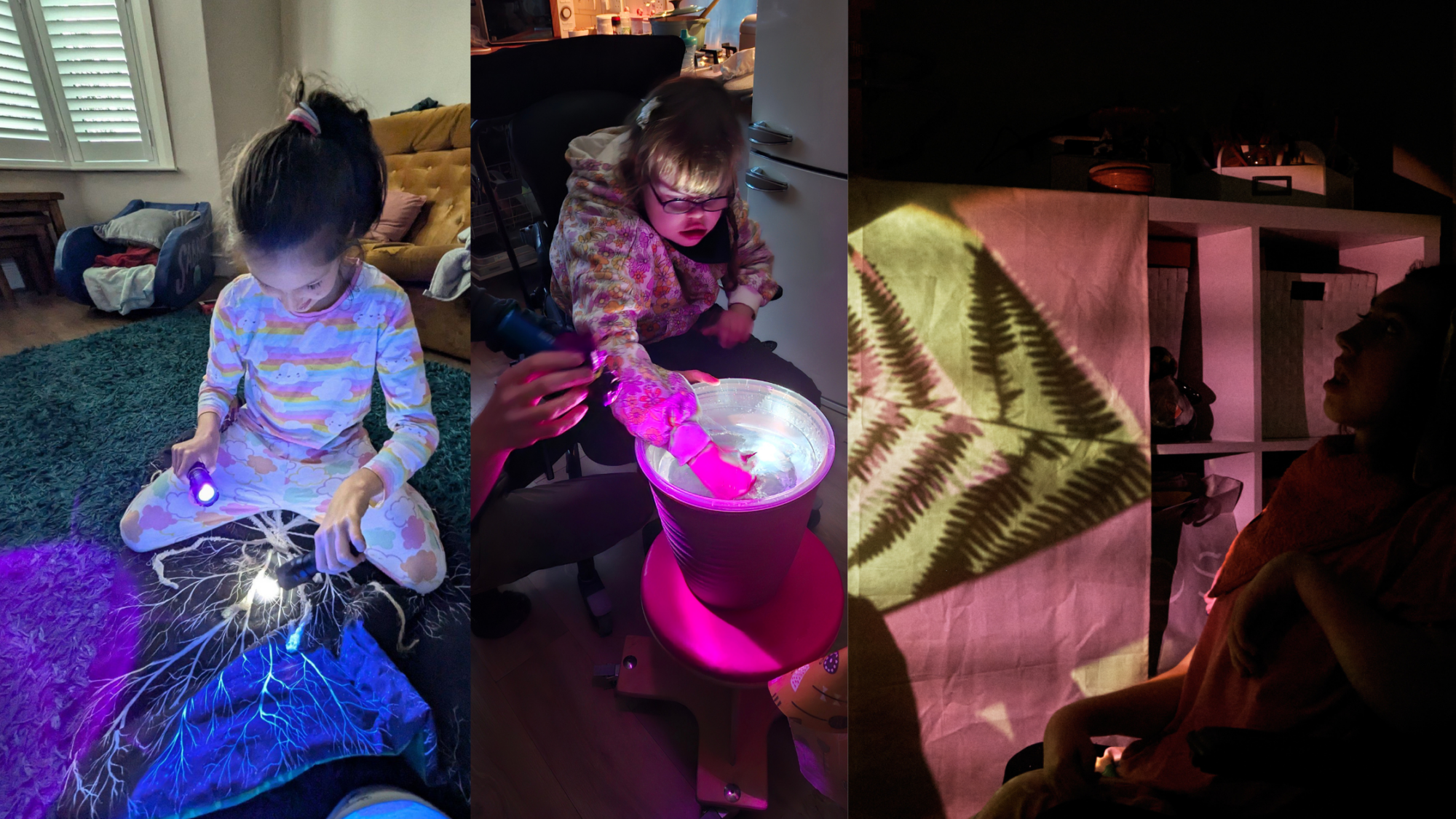

Over the last year our Associate Director Rhiannon Armstrong has taken on creative leadership of the UK version of When the World Turns. I can see it growing and shifting once more, guided by the careful hands that nurture it now.
When the World Turns is filled with the love of making, of growing together and apart, and the love of all living beings in their unique glory.
I want to thank the of hundreds of makers, production managers, producers, gardeners, artists, performers past and present, across the globe who have realised this vision as an eco-system… (The director always gets too much credit for something created by many hands and minds.)
To Mary and Wendy who planted that original seed. I hope they are proud of the continuing impact their vision is having around the world.
Both shows continue to tour in both countries and beyond. Long may they thrive!
When the World Turns, a collaboration between Oily Cart (UK) and Polyglot Theatre (AUS), was originally commissioned by Arts Centre Melbourne for arts and disability festival Alter State 2022.

